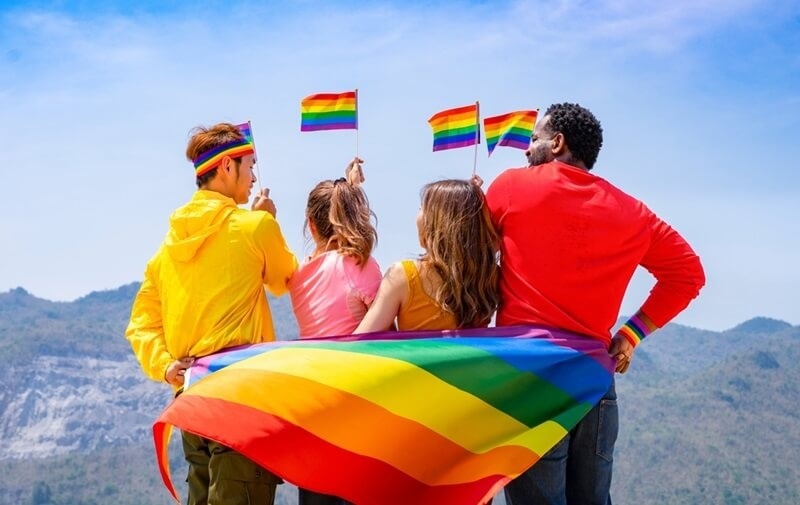Discovering Your True Sexual Orientation: Are You Gay?

Discovering one's sexual orientation is a deeply personal and often complex journey. It involves introspection, self-awareness, and, sometimes, a great deal of uncertainty. Each person's path to understanding their sexual identity is unique and can be influenced by various factors, including societal norms, personal experiences, and emotional connections.
Recognizing and accepting your true self is crucial to a fulfilling and authentic life. It's important to approach this journey with patience, openness, and self-compassion.
Reflecting on Your Mental and Emotional Patterns
Types of Attraction
Understanding the different types of attraction can help clarify your feelings. Romantic attraction involves the desire to form a romantic relationship with someone. Sexual attraction refers to wanting to engage in sexual activities with another person.
Platonic attraction is the desire for a deep friendship, while sensual attraction includes the wish to engage in physical affection like hugging or cuddling. Aesthetic attraction, on the other hand, is appreciating someone's physical appearance without necessarily feeling a romantic or sexual pull towards them.
Examine Your Feelings
It's essential to be mindful of your feelings and thoughts regarding different genders. Notice who catches your eye and stirs emotional or physical responses. This self-awareness can provide insights into your true preferences and help answer the question, "Am I gay?"
Compulsory Heterosexuality and Societal Pressures
Many individuals face societal pressures that push them towards heterosexuality, regardless of their true feelings. This phenomenon, known as compulsory heterosexuality, can make it challenging to recognize and accept non-heteronormative attractions.
Being aware of these pressures is the first step in overcoming them and understanding your genuine feelings. Seeking professional support from places like the Gay Therapy Center can provide a safe environment to explore and understand your true feelings, free from societal pressures.
Exploring and Understanding Your Attractions
Observing Reactions
One way to explore your attractions is by observing your reactions to people of various genders. Pay attention to who you find attractive and in what ways. This can help you understand whether your attractions align more with the same gender, different genders, or both.
Understanding Crushes
Crushes can be confusing but are often strong indicators of your attraction. Reflect on who you tend to develop crushes on and the nature of these feelings. Are they romantic, sexual, or both? Understanding the difference can help clarify your sexual orientation.
Reflecting on Past Relationships
Think about your past relationships and how comfortable you felt in them. Were you genuinely attracted to your partners, or did something feel off? This reflection can provide valuable insights into your true preferences.
Evaluating Fantasies
Consider the nature of your fantasies and who they typically involve. Fantasies can be a window into your subconscious desires and help you understand your sexual orientation more deeply.
Identification with Characters
Notice which characters in romantic or sexual scenes in media you identify with. Do you see yourself in characters who pursue same-gender relationships? This identification can be another clue about your orientation.
Recognizing and Accepting Your Sexual Orientation
Acknowledging Stereotypes
There are many stereotypes about what it means to be gay, but these are often inaccurate and limiting. Sexual orientation is about who you are attracted to, not about fitting into a specific mold.
Exploring LGBTQ+ Labels
Sexual orientation is personal and fluid. Exploring different LGBTQ+ labels can help you find the one that best fits your experiences. There are many labels beyond "gay" that might resonate with you, such as bisexual, pansexual, or queer.
Taking a Quiz
If you're still unsure, taking an "Am I Gay Quiz" can be a helpful starting point. These quizzes are designed to prompt self-reflection and can offer insights into your feelings and attractions.
Implementing Practical Steps for Self-Discovery
Flirting and Physical Intimacy
Engaging in flirting and physical intimacy with people of the same gender can help you gauge your feelings. Notice how you feel during these interactionswhether its excitement, comfort, or something else.
Safe Sex Practices

Always practice safe sex and ensure consent in all interactions. Safe sex practices not only protect your health but also show respect for your partner and yourself. Understanding and appreciating the science of gaydar can further enhance self-awareness and connection within the LGBTQ+ community.
Sexual Experiences and Orientation
Remember, having sexual experiences with different genders doesn't necessarily define your sexual orientation. It's about how you feel and who you are attracted to over time. Embarking on the journey to understand your sexual orientation is deeply personal. It's essential to approach it with openness and patience, allowing yourself the time and space to explore your true self.
Also read: Overcoming Gay Sex Anxiety: A Therapeutic Guide for Gay Men
Comprehending the Personal Journey Ahead
Discovering and accepting one's sexual orientation is a deeply personal and lifelong journey. It is a complex process that involves self-reflection and an ongoing exploration of one's feelings, thoughts, and experiences.
For many, understanding their sexual orientation can take time, and it is important not to rush into labeling oneself. Labels can be helpful in terms of self-identification and finding a community, but they should not be a source of pressure. Embrace the fluidity of your identity and give yourself the grace to evolve and understand your sexual orientation over time.
Finding and Utilizing Support Systems
Connecting with supportive individuals and communities is crucial during this journey. Surrounding yourself with understanding and accepting people can make a significant difference. Look for resources such as counseling services, support groups, and online communities that cater to LGBTQ+ individuals.
Counseling can provide a safe space to discuss your feelings and experiences, while support groups offer the opportunity to connect with others who may be going through similar journeys. Embrace your identity and celebrate your identity by engaging with communities affirming and validating your experiences.
Helpful Resources and Further Information
- Reading Material: Books and articles on LGBTQ+ identities and experiences.
- Support Groups: Local and online LGBTQ+ support groups.
- Counseling Services: Therapists and counselors specializing in LGBTQ+ issues.
- Online Resources: Websites and forums dedicated to LGBTQ+ communities, such as The Trevor Project and GLAAD.
- Hotlines: For immediate support, crisis lines like the Trevor Project (1-866-488-7386).
These resources can offer guidance, support, and a sense of community as you navigate your journey. Embrace who you are and remember that you are not alone.
You may also like: Boost Confidence: A Guide for Gay Men With Low Self-Esteem
Conclusion
Self-acceptance is at the core of understanding and embracing your sexual orientation. Take your time to explore and understand your feelings, and remember that it is okay to change your mind or redefine your identity as you grow. The journey to self-discovery is unique for everyone, and there is no right or wrong way to go about it. Trust yourself and your process.
This content was created by AI























